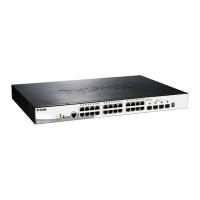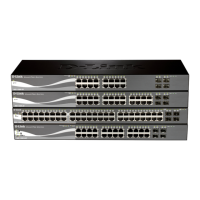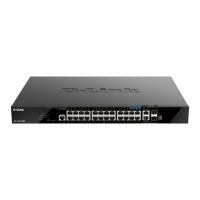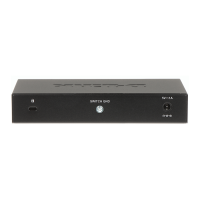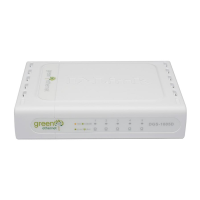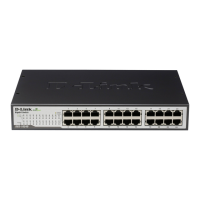DGS-1510 Series Gigabit Ethernet SmartPro Switch CLI Reference Guide
6
Interface Notation
When configuration the physical ports available on this switch, a specific interface notation is used.
The following will explain the layout, terminology and use of this notation.
In the following example, we will enter the Global Configuration Mode and then enter the Interface
Configuration Mode, using the notation 1/0/1. After entering the Interface Configuration Mode for port
1, we will change the speed to 1 Gbps, using the speed 1000 command.
Switch# configure terminal
Switch(config)# interface Ethernet 1/0/1
Switch(config-if)# speed 1000
Switch(config-if)#
In the above example the notation 1/0/1 was used. The terminology for each parameter is as follows:
Interface Unit’s ID / Open Slot’s ID / Port’s ID
The Interface Unit’s ID is the ID of the stacking unit without the physical stack. If stacking is disabled
or this unit is a stand-alone unit, then this parameter is irrelevant. The Open Slot’s ID is the ID of the
module plugged into the open module slot of the Switch. The DGS-1510 Series does not support any
open modules slots, thus this parameters will always by zero for this switch series. Lastly, the Port’s
ID is the physical port number of the port being configured.
In summary the above example will configure the stacked switch with the ID of 1, with the open slot ID
of 0, and the physical port number 1.
Error Messages
When the users issue a command that the Switch does not recognize, error messages will be
generated to assist users with basic information about the mistake that was made. A list of possible
error messages are found in the table below.
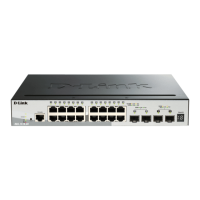
